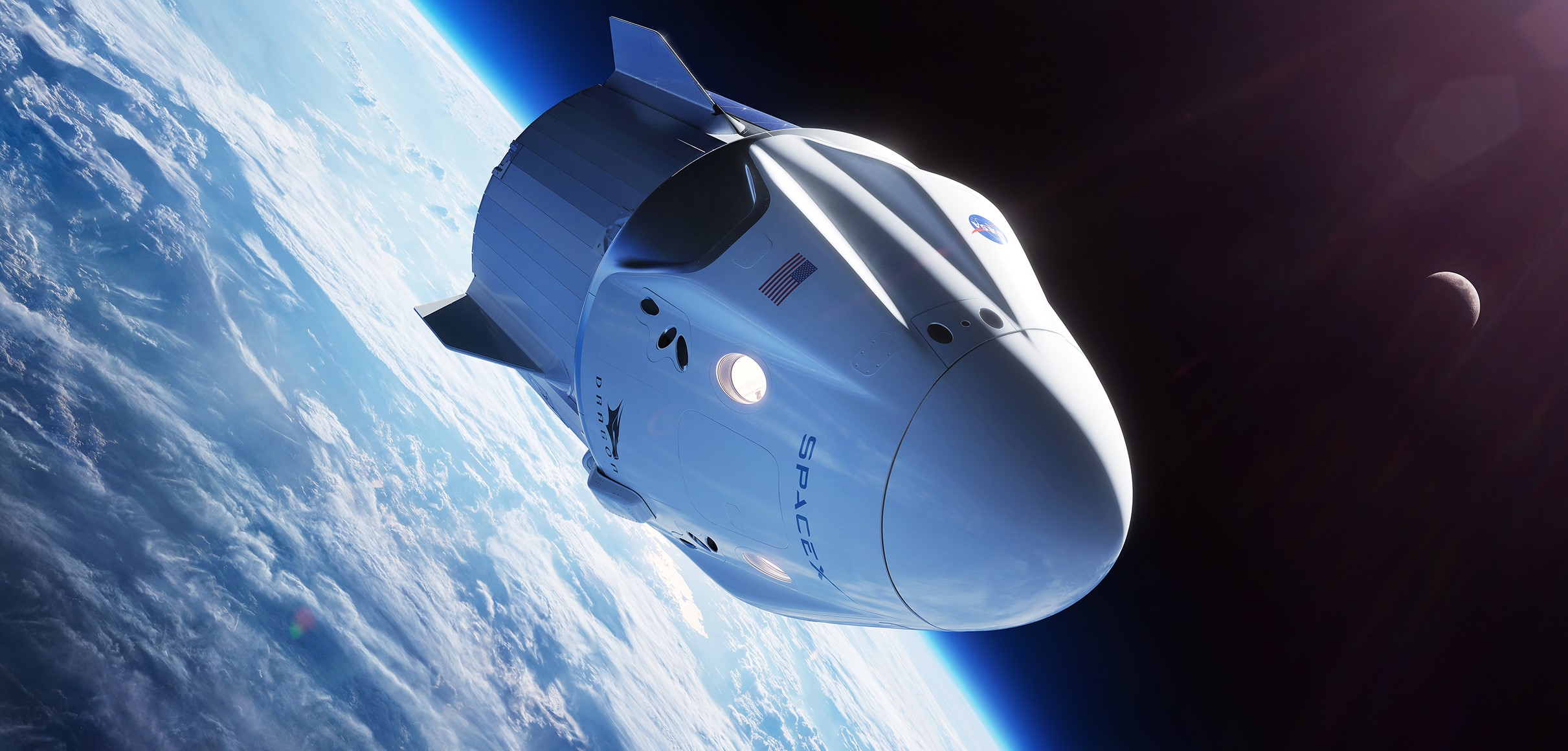
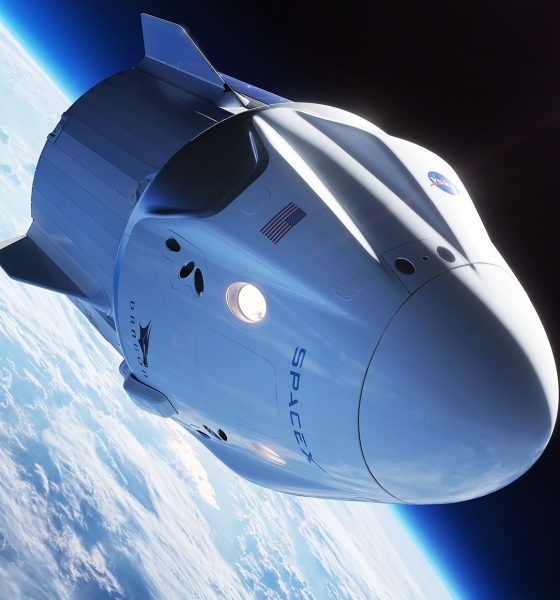
News
SpaceX aims to ship two new Crew Dragon spacecraft to Florida in the next two months
Speaking in an interview with CNN shortly after presenting an update on Starship, SpaceX CEO Elon Musk says that the company’s next two completed Crew Dragon spacecraft are both set to arrive in Florida before the end of the year.
Specifically, Musk estimated that Crew Dragon capsule 03 (C203) and its expendable trunk would be sent from SpaceX’s Hawthorne, CA factory to Cape Canaveral, FL as early as October. Crew Dragon capsule C204 is then expected to follow around one month later, arriving in Florida for preflight preparation as early as November.
Crew Dragon is an upgraded, human-rated follow-up to SpaceX’s highly successful Cargo Dragon, an uncrewed spacecraft that has successfully completed 19 orbital launches since December 2010. Over the course of those missions, Cargo Dragon has delivered almost 40 metric tons of cargo (39.5t, 87,000 lb) to the International Space Station (ISS) under SpaceX’s NASA Commercial Resupply Services 1 (CRS1) contract.
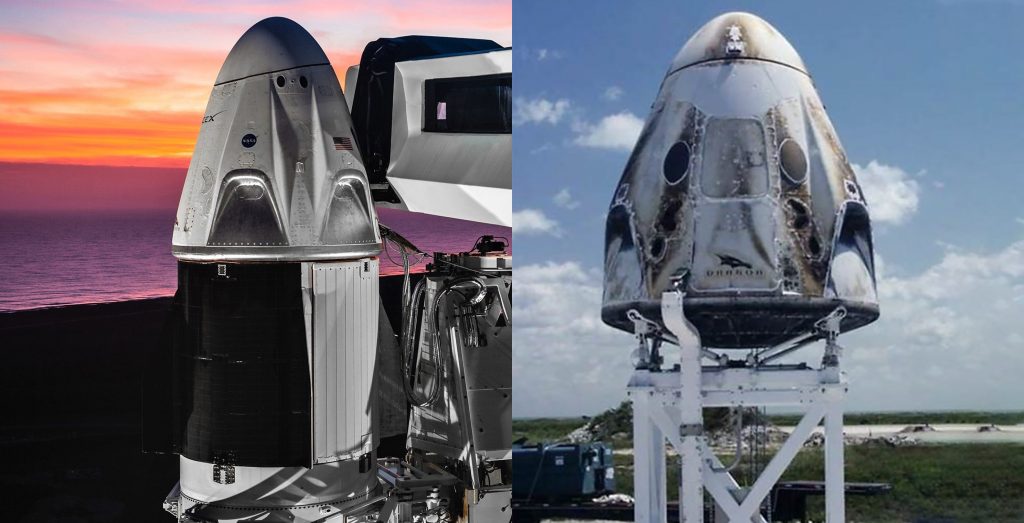
SpaceX executives have stated several times that Cargo Dragon (Dragon 1) and Crew Dragon (Dragon 2) barely have a single shared part between them, but Crew Dragon nevertheless shares the heritage built by its predecessor’s successful career. Like Dragon 1, Dragon 2 is comprised of two main sections – a capsule and a service section (known by SpaceX as a trunk). The capsule is designed to be recovered and reused, while the trunk is detached in orbit to eventually burn up in Earth’s atmosphere.
Same as Cargo Dragon, Crew Dragon’s trunk serves three main purposes aside from its basic structural role, providing power to the spacecraft with a solar array, regulating spacecraft temperature with a built-in radiator, and storing unpressurized cargo bound for the ISS.
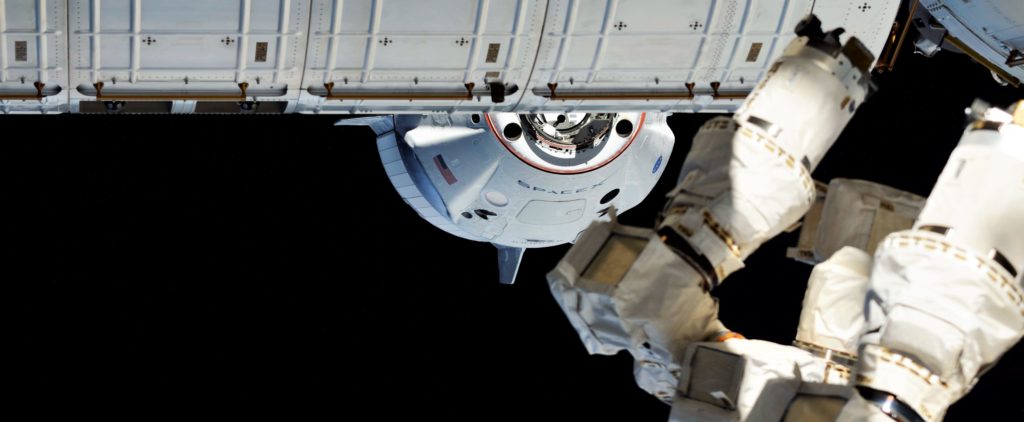
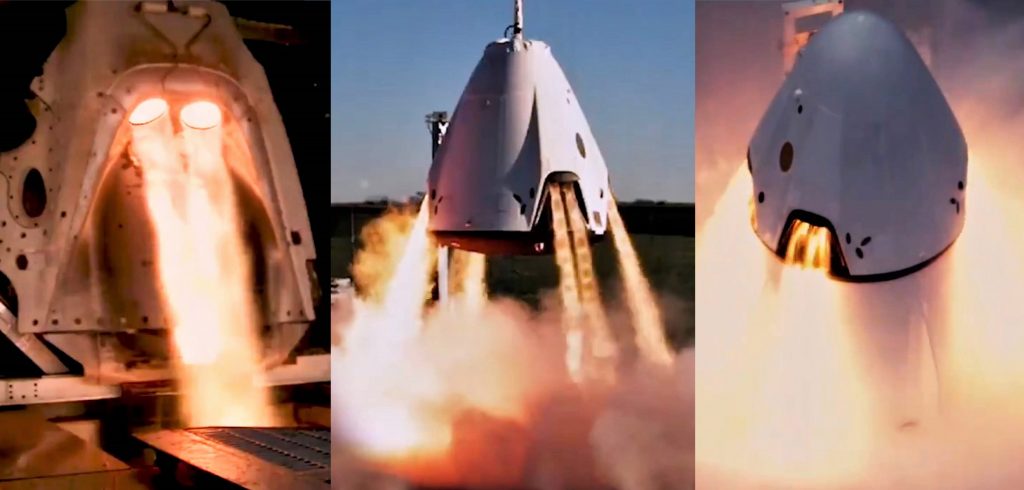
Unlike Cargo Dragon, Crew Dragon features a launch abort system (LAS) powered by eight Super Draco engines, nominally capable of carrying astronauts to safety in the event of a Falcon 9 failures at any point during launch. On April 20th, recently flight-proven Crew Dragon capsule C201 suffered a catastrophic explosion as a result of a design flaw in its high-pressure propellant system. Eventually blamed on the use of a leaky, titanium valve in a high-pressure, oxidizer-rich environment, that explosion significantly delayed SpaceX’s Crew Dragon test flight schedule.
Prior to April 20th, SpaceX anticipated launching Crew Dragon’s In-Flight Abort (IFA) test as early as July 2019, followed by the spacecraft’s crewed demonstration launch (Demo-2) in September or October 2019. Capsule C201 was supposed to support the IFA test and its destruction forced SpaceX to reconfigure its spacecraft flight order, reassigning the capsule (C203) originally intended to fly astronauts on Demo-2 to IFA, while the Dragon (C204) meant for SpaceX’s second astronaut launch (known as PCM-1) was reassigned to Demo-2.
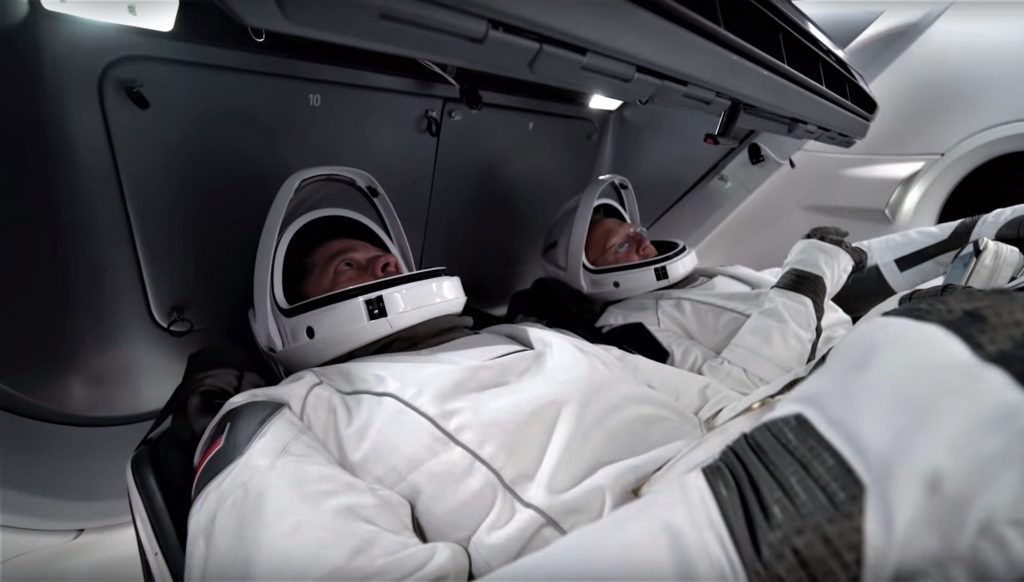
As of early September, SpaceX and NASA had nearly completed Crew Dragon’s static fire explosion investigation. The next few Crew Dragon spacecraft could have almost certainly been completed months ago, but SpaceX had to pause their integration to preserve access in the event that significant modifications were needed to recertify the capsules for flight. With the IFA Dragon set to arrive as early as October, SpaceX will have up to one month to prepare for the abort test, currently scheduled to occur no earlier than (NET) November 23rd according to recent FCC applications.
Assuming that Dragon performs flawlessly during the IFA, NASA could give Demo-2 – Crew Dragon’s inaugural astronaut launch – permission to launch as early as Q1 2020.
Check out Teslarati’s Marketplace! We offer Tesla accessories, including for the Tesla Cybertruck and Tesla Model 3.

News
Tesla dominates in the UK with Model Y and Model 3 leading the way
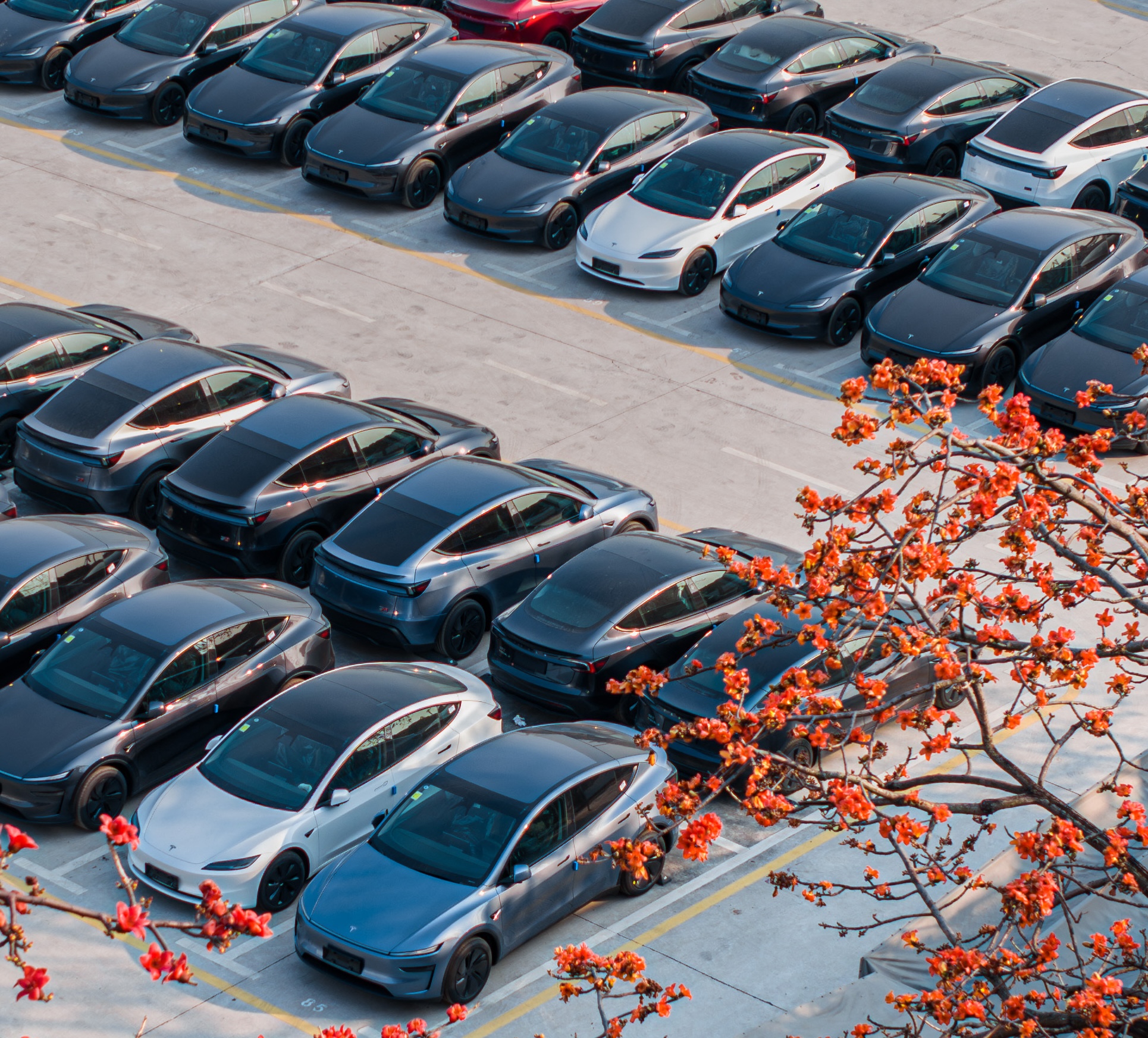
Tesla is dominating in the United Kingdom so far through 2025, and with about two weeks left in the year, the Model Y and Model 3 are leading the way.
The Model Y and Model 3 are the two best-selling electric vehicles in the United Kingdom, which is comprised of England, Scotland, Wales, and Northern Ireland, and it’s not particularly close.
According to data gathered by EU-EVs, the Model Y is sitting at 18,890 units for the year, while the Model 3 is slightly behind with 16,361 sales for the year so far.
The next best-selling EV is the Audi Q4 e-tron at 10,287 units, lagging significantly behind but ahead of other models like the BMW i4 and the Audi Q6 e-tron.
GOOD NEWS 🇬🇧 Tesla is absolutely crushing the UK electric vehicle market in 2025 💥
The numbers are in, and the dominance is clear. With an impressive amount of 42,270 vehicles delivered year-to-date, the brand now commands a solid 9.6% market share of the total auto market 🆒… pic.twitter.com/dkiGX9kzd0
— Ming (@tslaming) December 18, 2025
The Model Y has tasted significant success in the global market, but it has dominated in large markets like Europe and the United States.
For years, it’s been a car that has fit the bill of exactly what consumers need: a perfect combination of luxury, space, and sustainability.
Both vehicles are going to see decreases in sales compared to 2024; the Model Y was the best-selling car last year, but it sold 32,610 units in the UK. Meanwhile, the Model 3 had reached 17,272 units, which will keep it right on par with last year.
Tesla sold 50,090 units in the market last year, and it’s about 8,000 units shy of last year’s pace. It also had a stronger market share last year with 13.2 percent of the sales in the market. With two weeks left in 2025, Tesla has a 9.6 percent market share, leading Volkswagen with 8 percent.
The company likely felt some impact from CEO Elon Musk’s involvement with the Trump administration and, more specifically, his role with DOGE. However, it is worth mentioning that some months saw stronger consumer demand than others. For example, sales were up over 20 percent in February. A 14 percent increase followed this in June.
News
Tesla Insurance officially expands to new U.S. state
Tesla’s in-house Insurance program first launched back in late 2019, offering a new way to insure the vehicles that was potentially less expensive and could alleviate a lot of the issues people had with claims, as the company could assess and repair the damage itself.
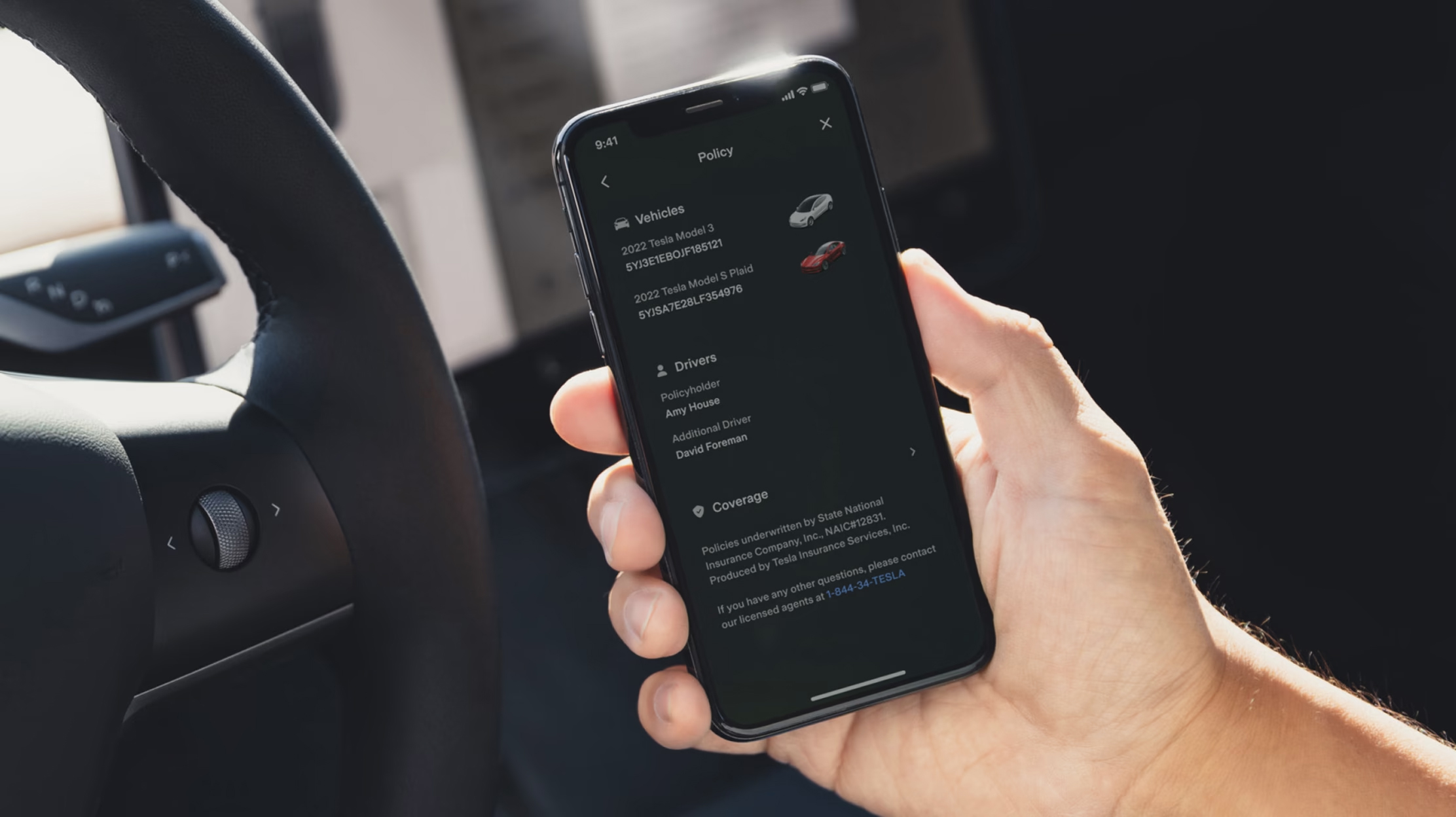
Tesla Insurance has officially expanded to a new U.S. state, its thirteenth since its launch in 2019.
Tesla has confirmed that its in-house Insurance program has officially made its way to Florida, just two months after the company filed to update its Private Passenger Auto program in the state. It had tried to offer its insurance program to drivers in the state back in 2022, but its launch did not happen.
Instead, Tesla refiled the paperwork back in mid-October, which essentially was the move toward initiating the offering this month.
BREAKING: Tesla Insurance has just officially launched in Florida.
This is the first new state to receive @Tesla Insurance in more than 3 years. In total, Tesla insurance is now available in 13 U.S. states (map in thread below of all the states).
Tesla Insurance in Florida uses… pic.twitter.com/bDwh1IV6gD
— Sawyer Merritt (@SawyerMerritt) December 17, 2025
Tesla’s in-house Insurance program first launched back in late 2019, offering a new way to insure the vehicles that was potentially less expensive and could alleviate a lot of the issues people had with claims, as the company could assess and repair the damage itself.
It has expanded to new states since 2019, but Florida presents a particularly interesting challenge for Tesla, as the company’s entry into the state is particularly noteworthy given its unique insurance landscape, characterized by high premiums due to frequent natural disasters, dense traffic, and a no-fault system.
Annual average premiums for Florida drivers hover around $4,000 per year, well above the national average. Tesla’s insurance program could disrupt this, especially for EV enthusiasts. The state’s growing EV adoption, fueled by incentives and infrastructure development, aligns perfectly with Tesla’s ecosystem.
Moreover, there are more ways to have cars repaired, and features like comprehensive coverage for battery damage and roadside assistance tailored to EVs address those common painpoints that owners have.
However, there are some challenges that still remain. Florida’s susceptibility to hurricanes raises questions about how Tesla will handle claims during disasters.
Looking ahead, Tesla’s expansion of its insurance program signals the company’s ambition to continue vertically integrating its services, including coverage of its vehicles. Reducing dependency on third-party insurers only makes things simpler for the company’s automotive division, as well as for its customers.
News
Tesla Full Self-Driving gets sparkling review from South Korean politician
“Having already ridden in an unmanned robotaxi, the novelty wasn’t as strong for me, but it drives just as well as most people do. It already feels like a completed technology, which gives me a lot to think about.”
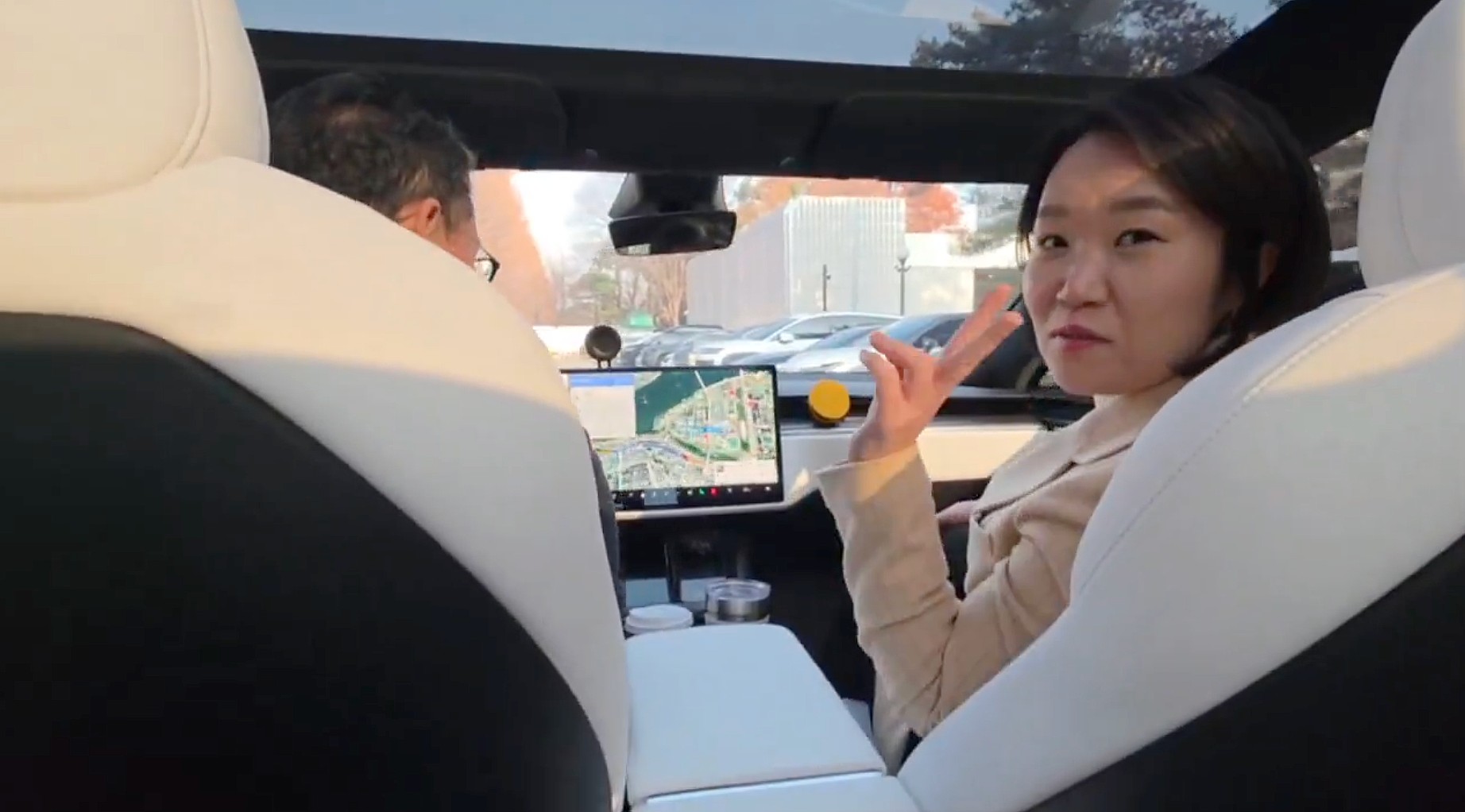
Tesla Full Self-Driving got its first sparkling review from South Korean politician Lee So-young, a member of the country’s National Assembly, earlier this week.
Lee is a member of the Strategy and Finance Committee in South Korea and is a proponent of sustainable technologies and their applications in both residential and commercial settings. For the first time, Lee was able to utilize Tesla’s Full Self-Driving technology as it launched in the country in late November.
Her thoughts on the suite were complimentary to the suite, stating that “it drives just as well as most people do,” and that “it already feels like a completed technology.”
드디어 오늘, 서울에서 테슬라 FSD 체험 했습니다.
JiDal Papa님의 모델S 협찬에 힘입어^^ 파파님 정말 감사합니다.
국회 -> 망원시장 -> 홍익대 -> 국회 복귀 코스였고요.
이미 무인 로보택시를 타봐서 그런지 신기함은
덜했지만, 웬만한 사람만큼 운전을 잘하네요.이미 완성된 기술이라고… pic.twitter.com/8pAidHBpRG
— 이소영 국회의원 (Soyoung Lee) (@im_soyounglee) December 17, 2025
Her translated post says:
“Finally, today I got to experience Tesla FSD in Seoul. Thanks to the Model S sponsored by JiDal Papa^^, I’m truly grateful to Papa. The route was from the National Assembly -> Mangwon Market -> Hongik University -> back to the National Assembly. Having already ridden in an unmanned robotaxi, the novelty wasn’t as strong for me, but it drives just as well as most people do. It already feels like a completed technology, which gives me a lot to think about. Once it actually spreads into widespread use, I feel like our daily lives are going to change a lot. Even I, with my license gathering dust in a drawer, don’t see much reason to learn to drive a manual anymore.”
Tesla Full Self-Driving officially landed in South Korea in late November, with the initial launch being one of Tesla’s most recent, v14.1.4.
It marked the seventh country in which Tesla was able to enable the driver assistance suite, following the United States, Puerto Rico, Canada, China, Mexico, Australia, and New Zealand.
It is important to see politicians and figures in power try new technologies, especially ones that are widely popular in other regions of the world and could potentially revolutionize how people travel globally.








